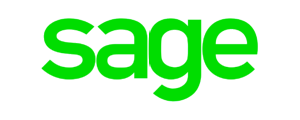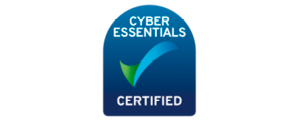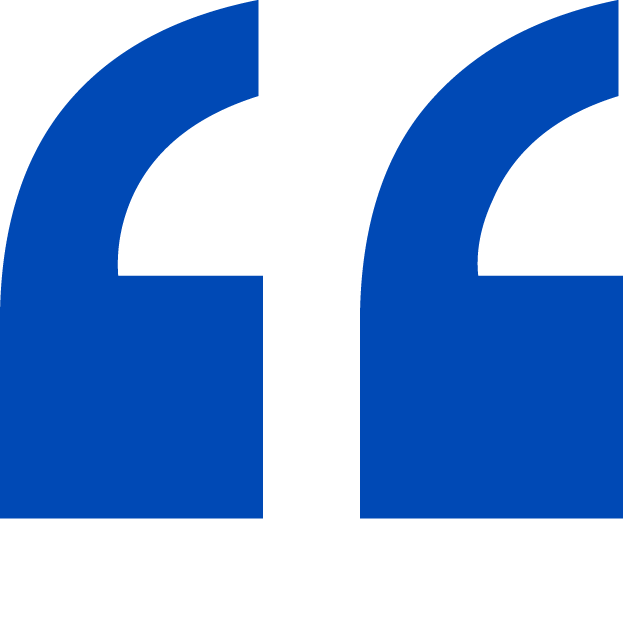The success of your lawn treatment business depends on regular, reliable payments from happy clients who want to use your service time and time again.
This recurring income model is the basis of thriving service businesses, securing cash flow and predicting revenue to help plan future growth. If your diary is bursting with bookings, it’s likely you’re providing excellent lawn care combined with efficient service.
But as you play your part in keeping the lawns in the UK’s 24 million gardens looking lush, keep in mind that how you collect these client payments is crucial.
Your aim is to encourage your loyal clients to stick with you long-term. You need to increase the lifetime value of every customer and keep churn as low as possible to guarantee sufficient profit.
And to do this you need to make every part of your offering irresistible: exemplary work, flexible and friendly service, and convenient and secure payment options.
So when it comes to lawn treatment costs, is it time to put some outdated payment methods out to pasture?
Here, we’ll explore the pros and cons of the different collection methods your lawn treatment business can employ.
Getting It Right to Reduce Churn
 Before assessing what payment options you’d like to offer, it’s important to consider the possible effects of churn on your business.
Before assessing what payment options you’d like to offer, it’s important to consider the possible effects of churn on your business.
Voluntary churn is when a customer cancels their bookings because they’re unsatisfied with the service, are moving to a competitor or no longer need lawn care. Perhaps they’re moving out of the area or their financial circumstances have changed.
You’re in control of some of this: mediocre service can be addressed. But other lost clients will just be par for the course: you can’t commute 100 miles to treat a loyal client’s lawn.
Involuntary churn occurs when customer bookings unintentionally lapse. Even if they’re great advocates of your business, they could still suddenly drop out of your diary. And this is invariably due to how they pay you.
Maybe their credit card has expired, or their card is stolen or lost and their details change. Processing errors can lead to declined payments or insufficient funds in their account to pay you.
Faced with any of these issues, the likelihood of losing a client increases if you don’t deal with it promptly and efficiently. Poor customer service here could undo all your hard work, allowing them to consider a competitor.
So when assessing payment options to receive lawn treatment costs, keep in mind their overall reliability and flexibility, and how they can help you to minimise churn.
Lawn Treatment Business Payment Options
Invoices
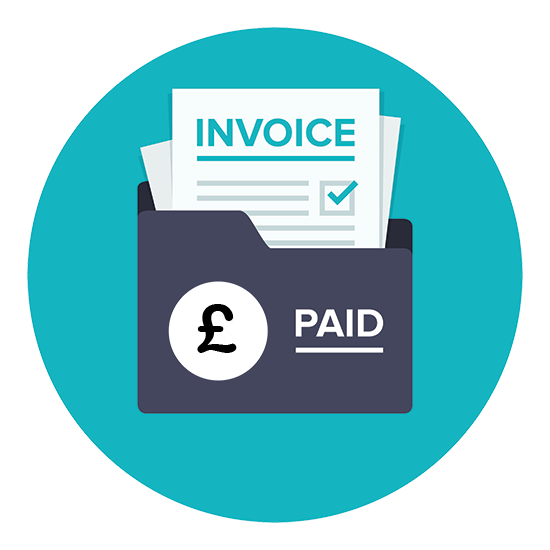 Issuing an invoice is the traditional, trusted method of billing for services. They set out the work done, the amount due and the payment terms. Handed over after the work is completed, they can be used for either one-off or recurring payments.
Issuing an invoice is the traditional, trusted method of billing for services. They set out the work done, the amount due and the payment terms. Handed over after the work is completed, they can be used for either one-off or recurring payments.
Whether you issue them on paper, via email or through an automated accounting system, it’s up to your client to pay you on time.
They can take their pick how they do that: bank transfer, credit or debit card over the phone or in person, cash or cheque.
This results in a muddle of payment methods for you to keep track of: crumpled notes in your back pocket, card details scribbled down on a piece of paper, a cheque that takes weeks to make it to the bank. When you’re working outside, away from an office environment, this becomes even more of a hassle.
Your client base will likely include people who prefer to pay this way. So keep it on the table but use your persuasive powers to convince them of alternative methods.
Pros:
- Ideal for private individuals who prefer to pay how they’ve always paid for home services. They may be suspicious of paying online and like the paper trail of using their cheque book.
- If they’re organised, you could get cash in hand as soon as the job is completed.
- You’ll be meeting client needs and demonstrating your flexibility.
Cons:
- Increased admin load which will detract from delivering great service.
- The risk of late payments, requiring time-consuming chasing and possibly damaged client relationships.
- Unpredictable cash flow as the process isn’t automated.
Online Credit Card Payments
You can take a step towards embracing technology by accepting online credit or debit card payments for your lawn treatment business services.
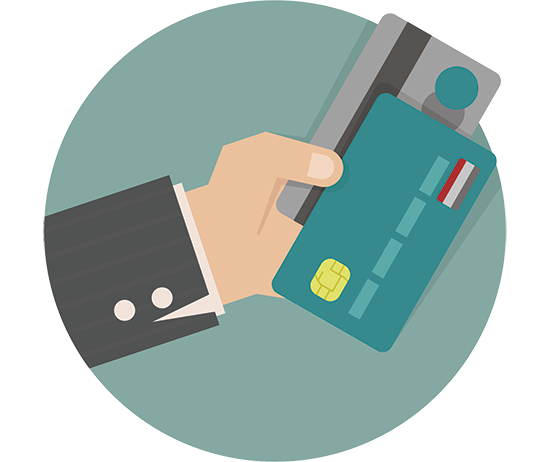
Many of your customers will be used to paying this way for other goods and services, so incorporating an online payment form into your website could work well.
All you need to do is send them a link to the portal with the correct amount due and your bank details. All they need to do is complete their details.
You’ll be offering them convenience, security and speed while your account will receive the payment promptly.
Pros:
- Customer familiarity with the process and trust that their payment is secure.
- Customer control of when they pay and which card they use.
- Instant payment for your business.
Cons:
- Manually sending individual invoices takes time and is prone to error.
- Possibility of cards being declined, leading to customer frustration and potential churn.
Direct Debit
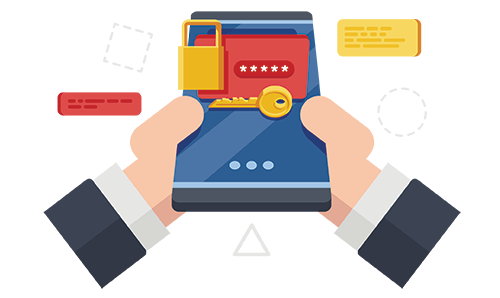 When clients make a regular monthly booking with you, they’ll appreciate the simplest, most secure method to pay their lawn treatment costs.
When clients make a regular monthly booking with you, they’ll appreciate the simplest, most secure method to pay their lawn treatment costs.
Introducing a Direct Debit scheme will tick these boxes. It’s designed to efficiently collect recurring payments, transferring money directly from their bank account to yours on pre-arranged dates.
Instead of remembering to pay you each month, they’ll be able to ‘set it and forget it’, reassured that the right amount will leave their account on the right day.
Regulated by Bacs and protected by the Direct Debit Guarantee, this trusted and secure payment method delivers a broad range of benefits for both you and your clients.
Thanks to automation, you’ll be confident that payments will arrive on time, easing cash flow and reducing admin. Your customers will also be in control, with the peace of mind that your service will continue uninterrupted.
And because all collections only need a one-off authorisation via a Direct Debit mandate, you can easily increase the amount you charge. All you need to do is inform your client in advance that their Direct Debit amount will be going up.
Outsourcing your Direct Debit scheme to a bureau such as FastPay will make the process even simpler. They’ll oversee the day-to-day management of all payments, keeping you up to date about every transaction.
Pros:
- Full automation to reduce admin and free up time.
- Reduces churn as Direct Debit is connected to bank accounts not cards, the details of which rarely change.
- Boosts cash flow, helping forecasting and supporting growth.
- Regular updates about any unpaid Direct Debits that can be swiftly raised with clients.
- Unrivalled flexibility to alter payment amounts and dates.
- Fully secure thanks to the Direct Debit Guarantee.
- Can be integrated with accounting platforms including Xero and Sage.
Cons:
- Some customers may cling on to paying by cash or cheque and resist the advance of technology.
Credit Card Processors
Credit card processors allow businesses to take regular payments via a credit card rather than through a bank account.
Platforms such as Braintree and Chargebee can be integrated into your website to automate the process. They offer a secure, client-friendly alternative to inputting credit card details each time payment is required, or simply remembering to log on and pay.

Pros:
- Automation improves cash flow for you and convenience for your clients.
- Customers can add more than one credit card so if one expires, another one is ready to be used.
- Can be integrated with accounting platforms.
- Can provide a branded payment portal for your website.
Cons:
- Not suitable for customers who are reluctant to embrace online payments.
- When clients only link one card, the chances of involuntary churn increase as cards expire every couple of years.
- Cards that have reached their credit limit risk failed payments.
Choosing the Best Method for Your Lawn Treatment Business
Your lawn care customers will likely span many different ages, preferences and attitudes to money. Some will want to keep paying for their lawn treatment costs with cash, others will want the slickest, most automated way possible.
Removing payment obstacles is a simple way to attract and retain clients, positioning your business as helpful and keen to relieve hassle. If they can pay you easily, they’re more likely to remain loyal and help your profile and profits grow.
Because of this, it’s a wise move to offer a selection of payment options. But not so many to cause you a repeated admin headache.
Choose the best fit for your lawn treatment business and your clients. Make sure they each have a convenient, straightforward method without compromising your business efficiency. Take this approach and you’ll be prioritising both them and you.
If automation, security, reliability and customer satisfaction are top of your wish list, joining forces with a Direct Debit bureau will deliver.
The benefits this brings will make it easy to persuade clients to sign up, saving them time and hassle while you enjoy smooth cash flow to provide an even more impressive service.
